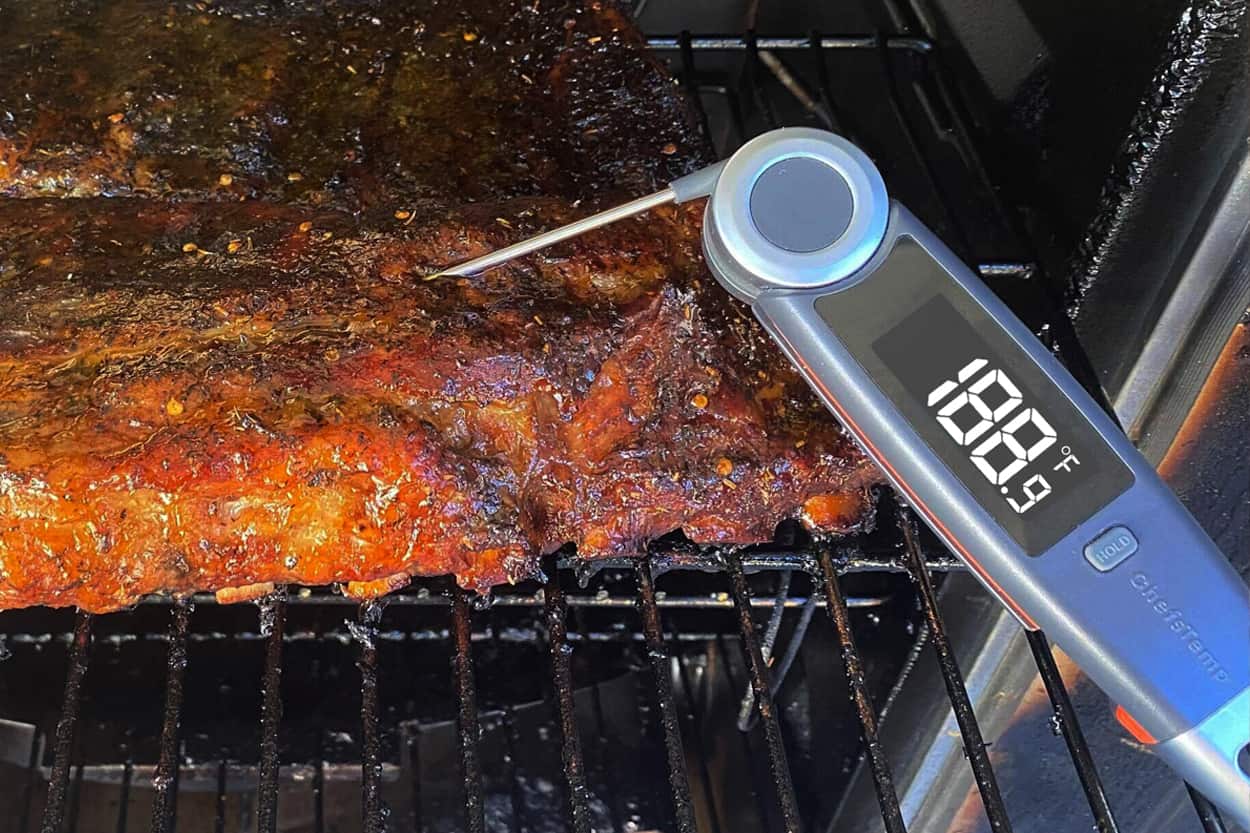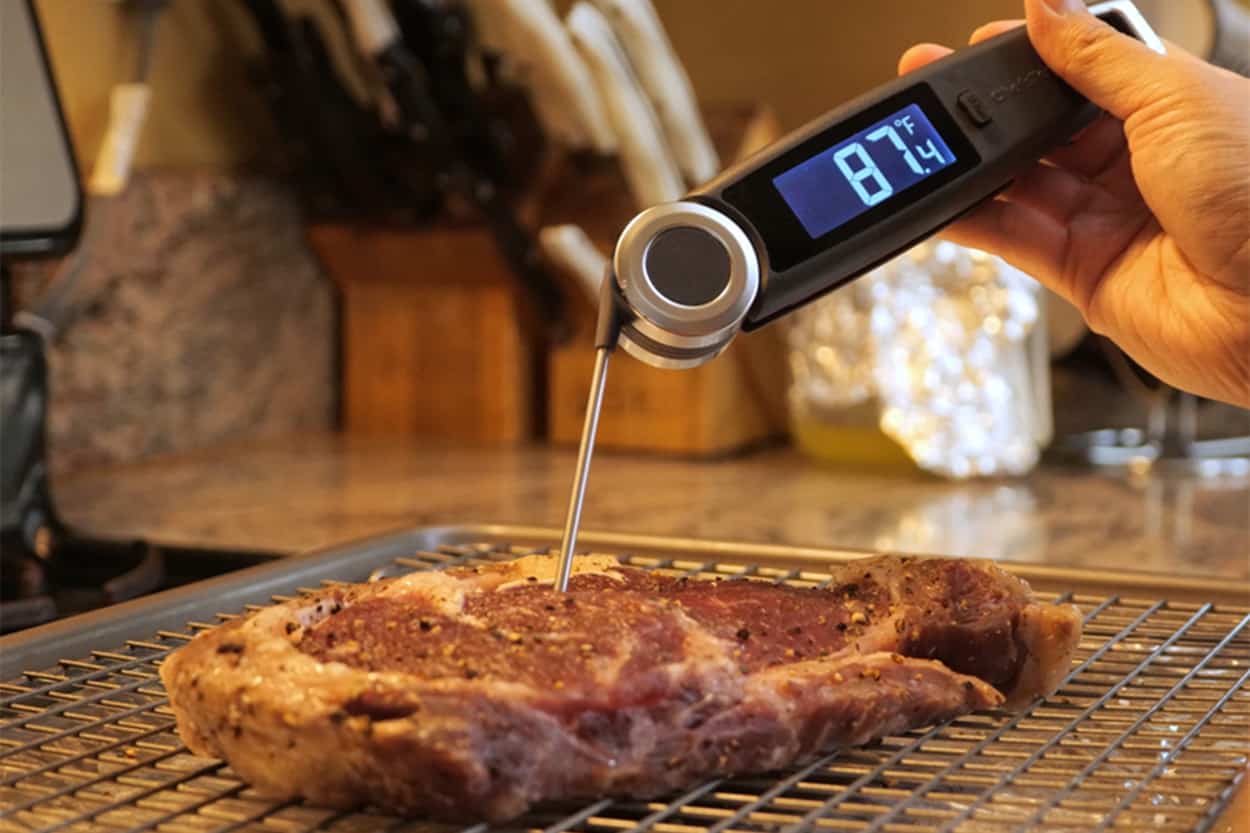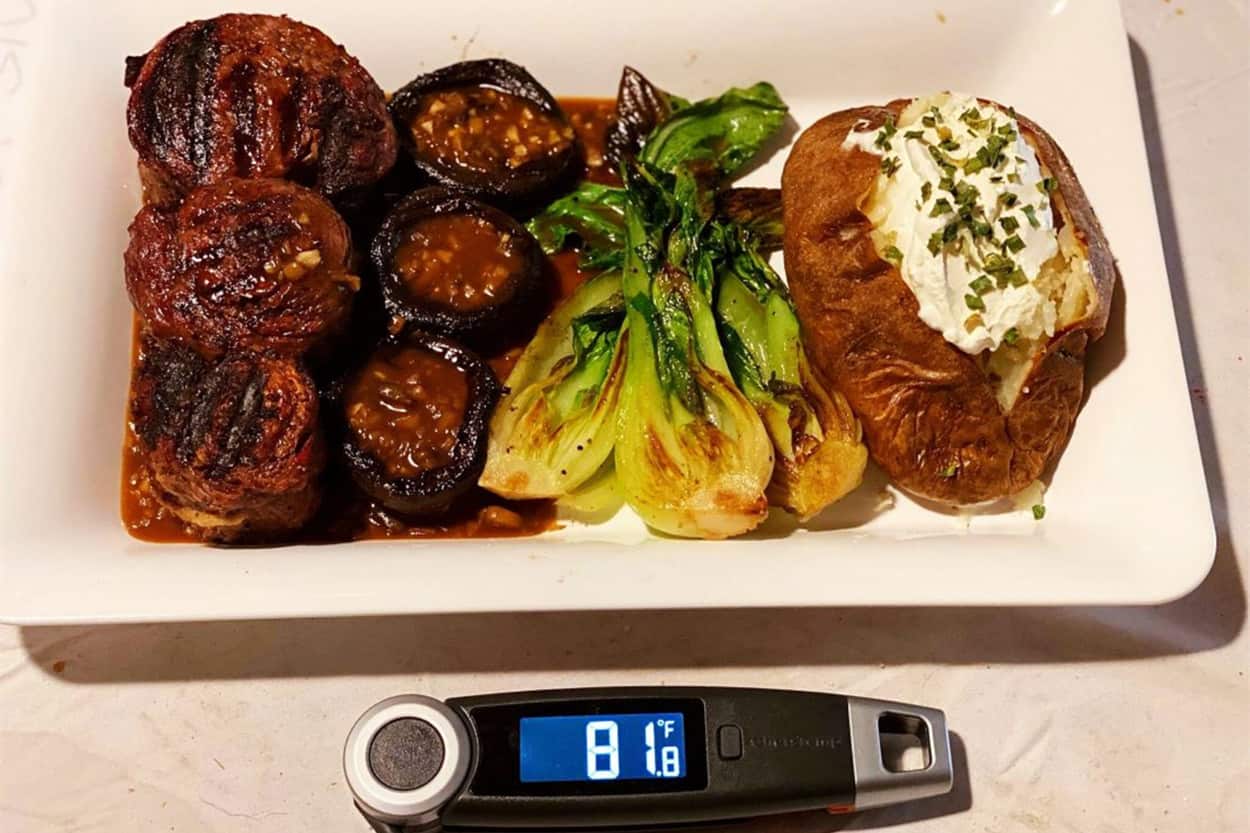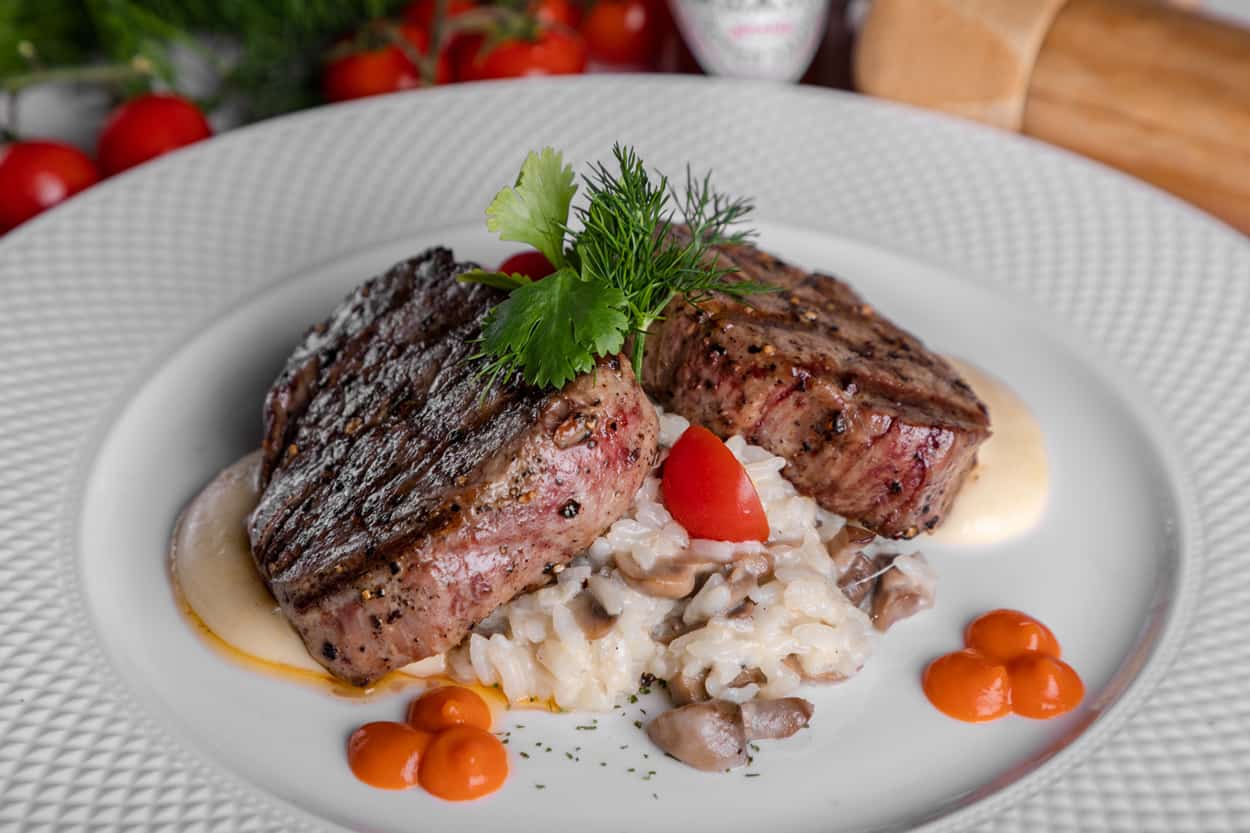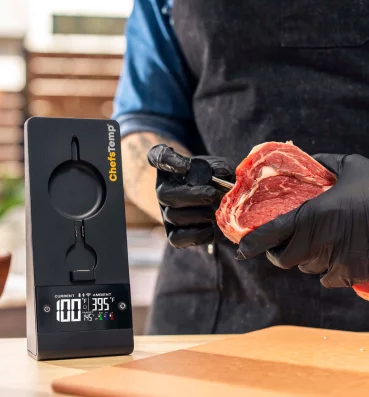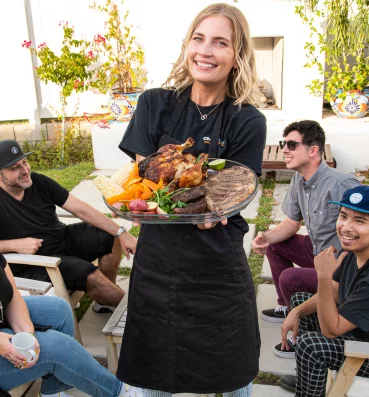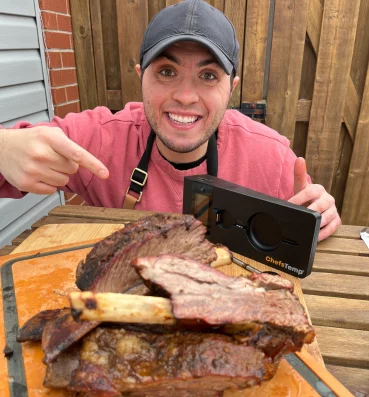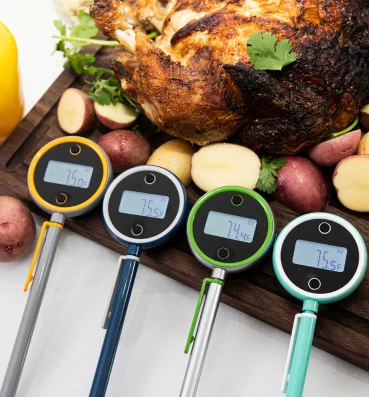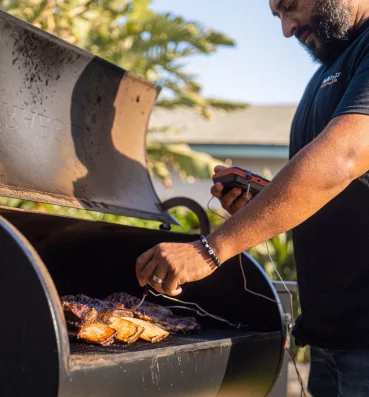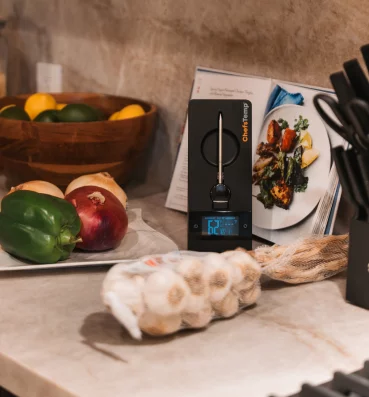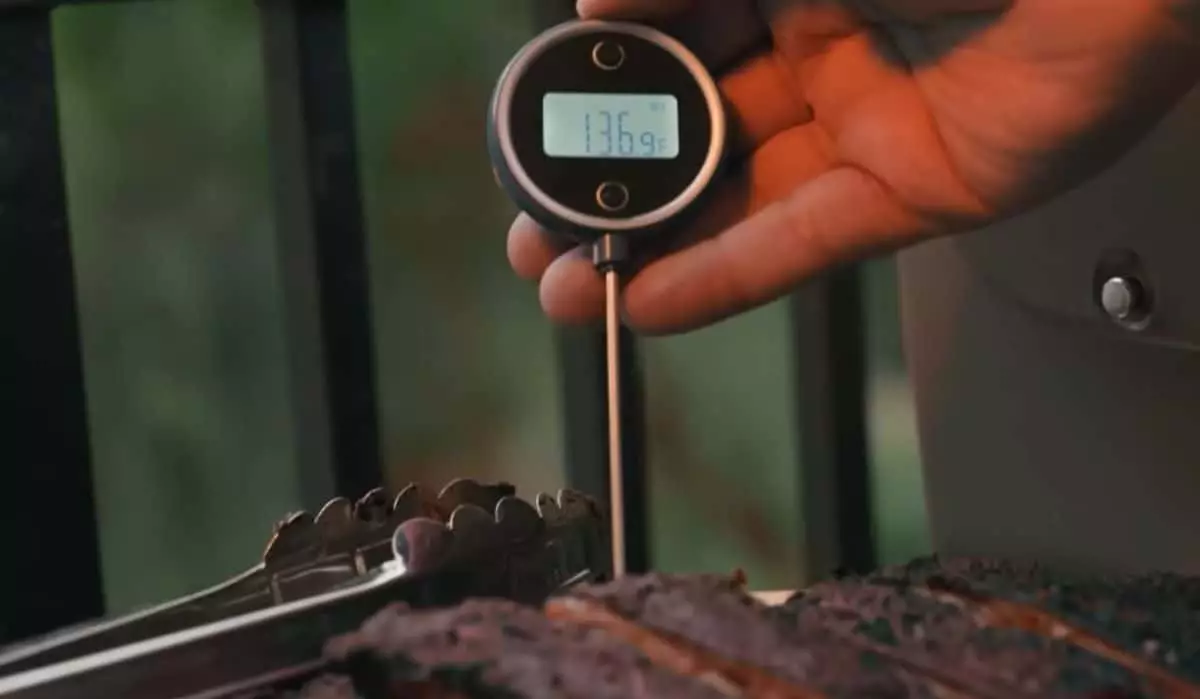
From Rare to Well-Done: Master Your Meat Cooking Skills with a Thermometer
While cooking leans more on the side of the arts and self-expression (that’s why it’s called the culinary arts), the process of cooking itself is a form of science. The application of heat, manipulation of temperature, combining ingredients of different types, textures, and tastes, precise calculation of condiments, understanding how different food and ingredients react to each other, etc., all require scientific thinking. It is especially apparent in cooking meat, where different types of proteins are required to reach a certain internal temperature to achieve the desired doneness, taste, texture, and safety. This is where the importance of a meat thermometer comes into the picture – to help you ensure your meat is cooked to perfection every time.
This entry will teach you how to use your meat thermometer to achieve the perfect doneness of your meat, whether it’s beef, pork, poultry, etc., and whether it should be medium-rare, medium-well, well-done, etc.
Table of Contents
Why Use a Meat Thermometer
First off, why exactly do you need a meat thermometer, and can you tell the meat is perfectly cooked just by experience?
Meat is tricky to cook. As said earlier, different types have different specific internal temperature requirements, and different stages of doneness require different temperatures. Unless you cut through the meat, or you have the superpower to see through the layers of meat while it’s being cooked, it’s extremely difficult to determine its doneness without using a thermometer.
Of course, color can give some signs, but meat color can be affected by a variety of factors, from the type of meat, the age of the animal, and the type of cooking you do with it. Moreover, the grill, oven, and the altitude of your location can affect the cooking time. This is why even the most experienced chefs in 5-star Michelin restaurants rely on thermometers in their kitchens. That’s how invaluable this tool is in cooking.
By simply inserting the probe tip of the thermometer into your meat (usually into the thickest part), you can be sure that you can reach the desired internal temperature of the meat for your desired level and that you are cooking exactly how you want it.
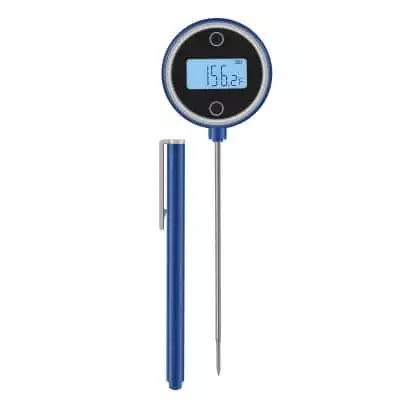
From Rare to Well-Done: Temperature Guide
Whether you prefer your meat a little bit on the rare side with juices oozing out and a little bit cold in the middle, or medium-rare where there is a balance of tenderness, juiciness, and flavor, or a well-done firm steak, you need to know the right temperature to reach each level of doneness. Here are the recommended internal temperatures for rare to well-done meat:
Rare
For steak, it should reach an internal temperature of 125°F (52°C). At this stage, the meat is cooked from the outside. The center will be a little bit cold, but it will be red and will have kept most of its fat, giving you that distinct tender and juicy beef flavor.
Medium-rare
The Celsius temperature for medium-rare is around 55-60°C (57°C or 135°F to be precise). At this stage, the meat will have a brown crust on the outside, its center will be warm and pink in color. The meat is slightly firmer but will still hold most of its juice and will still be tender. The flavor will be more complex too.
Medium
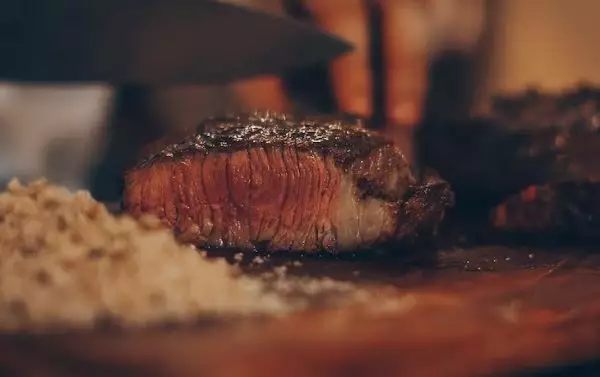
Crank the internal temperature up a little to 145°F (63°C), and you will have medium steak. Medium will have a slightly pink center and warm temperature throughout. The meat will be firmer than rare and medium-rare but will still be juicy and tender, with a more pronounced beef flavor.
Medium-well
For a medium-well steak, you need an internal temperature of 155°F (68°C). At this point, the meat will be slightly pink in the center with mostly grey throughout. The meat will be firmer and less juicy but will still be a little tender. It will also have a less beefy flavor too.
Well-done steak
A well-done steak reaches an internal temperature of 160°F (71°C). At this point, the meat will be wholly grey and will have no signs of pinkness in the center. It will be firm and less juicy than all of those mentioned above, it will also have a slightly less beefy taste and will have a dry texture.
Here are quick guidelines for temperature and level of doneness for other types of proteins:
Internal temperature cooking guide for pork:
- Medium: 145°F
- Well-done: 160°F
Internal temperature cooking guide for lamb:
- Medium-rare: 130°F
- Medium: 140°F
- Medium-well: 150°F
- Well-done: 155°F
Internal temperature cooking guide for poultry meats (chicken, duck, turkey, etc.):
- White meat: 165°F
- Dark meat: 165°F
- Ground poultry: 165°F
Note:
As you can see in the guidelines above, the internal temperature guidelines for poultry are different. This is because poultry meats, such as chicken, must be cooked thoroughly to reduce the risk of foodborne diseases like Salmonella and Clostridium, both being bacteria found in chicken meat. Eating undercooked meat increases your risk of food poisoning. Cooking poultry at the right temperature, however, kills all known bacteria in the meat, making it safe for consumption.
Also, it is important to remember that these internal temperature guides are recommendations, so you can reach the preferred doneness of your protein. This is why it is always a good idea to refer to your meat thermometer to achieve your desired doneness each and every time.
The Takeaway
Experience may tell you to trust in visual cues. But as said earlier, there are lots of factors that can affect the color of the meat, and your eyes can deceive you. While color is a good indicator, it is not always the most accurate. Thus, the best way to cook any type of meat to perfection is to reach the right internal temperature for your preference.
Again, cooking is both an art and a science. There are rules to ensure safety, but there are also guidelines that you can work around, so don’t be afraid to experiment with different cooking methods. There are several ways to cook meat, from searing, roasting, grilling, sous vide, etc. Different types of cooking can also bring out different layers of flavors of the meat, this is what makes the culinary arts so exciting.
Discover Other ChefsTemp Products
Discover more recipes and learn kitchen tricks by joining our cooking family on Facebook.
You may also like:
